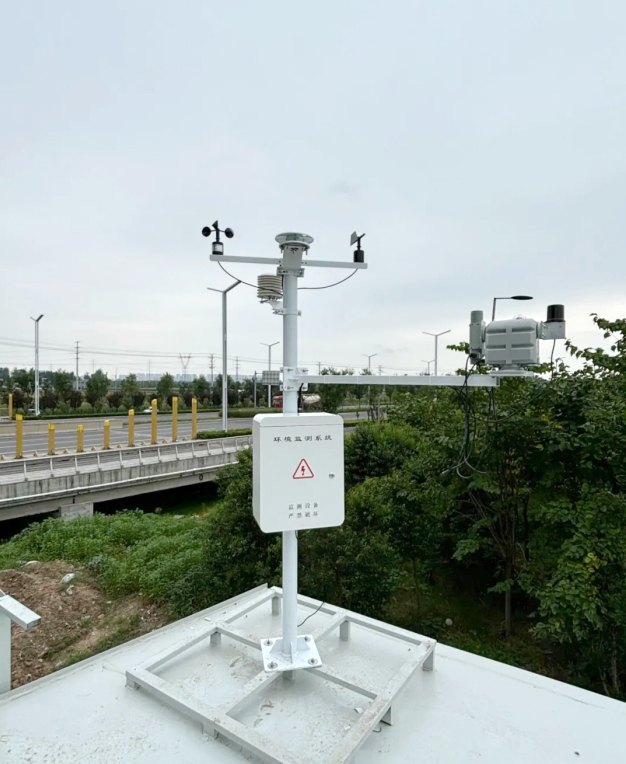

— Blogs —
—Products—
 Consumer hotline +8618073152920
Consumer hotline +8618073152920 WhatsApp:+8615367865107
Address:Room 102, District D, Houhu Industrial Park, Yuelu District, Changsha City, Hunan Province, China
Product knowledge
Time:2025-04-09 11:19:28 Popularity:26
With the growing global demand for clean energy, solar photovoltaic (PV) power generation is gradually becoming the core force in the development of renewable energy. However, the operating efficiency of photovoltaic power generation systems is directly affected by various meteorological factors. To enhance the performance and stable operation of these systems, the deployment of photovoltaic meteorological stations has become an essential component. As an environmental monitoring solution designed specifically for photovoltaic power stations, photovoltaic meteorological stations play a crucial role in real-time data collection, operation optimization, and intelligent analysis.

A photovoltaic meteorological station is an integrated monitoring system specifically designed to collect various environmental and meteorological data that influence the efficiency of photovoltaic power generation. These data include, but are not limited to, solar radiation, temperature and humidity, wind speed and direction, and atmospheric pressure. By continuously monitoring these parameters, the station can assess the operational status of the photovoltaic system, identify performance trends, and provide data support for optimized maintenance strategies and predictive operation and maintenance (O&M).
The core objective is to enhance the energy output efficiency of photovoltaic power stations under different environmental conditions, ensuring the safe and economical operation of the power generation system in variable natural conditions.
A complete photovoltaic meteorological station typically consists of the following components:
- Solar Power Supply System: Independently powered to ensure the equipment continues to operate in remote areas.
- Sensor Module: Integrates multiple sensors to collect environmental parameters such as radiation, temperature, humidity, wind speed, and direction in real-time.
- Data Collection and Transmission System: Supports local storage and remote transmission, with data uploaded to the cloud or local servers via 4G/LoRa/NB-IoT.
- Intelligent Processing Unit: Performs initial processing, calibration, and formatting of the collected data, improving data usability.
- Data Visualization and Interface System: Supports web and mobile access, enabling remote monitoring and historical data queries.
This system can operate unattended and is highly stable and adaptable, making it suitable for various climatic environments, including extreme weather and complex terrain.

- Includes total radiation on tilted surfaces, total horizontal radiation, direct radiation, and diffuse radiation.
- Used to calculate the actual energy received by photovoltaic modules and identify the causes of fluctuations in module output.
- Affects the efficiency of solar cells and the lifespan of modules.
- Can be used to predict performance degradation due to high temperatures or system failures caused by humid environments.
- Impacts the cooling efficiency of modules and the safety of mounting structures.
- Provides protective or shutdown recommendations in high wind conditions.
- Related to the penetration ability of radiation and can assist in determining the intensity of sunlight.
Through long-term monitoring and analysis of the above data, users can establish more scientific operation and maintenance models, enabling predictive maintenance and performance evaluation of the photovoltaic system.

- Large-Scale Photovoltaic Power Stations: Deployed in complex environments such as deserts, plateaus, and coastal areas, real-time monitoring can significantly enhance overall power generation efficiency and safety.
- Distributed Photovoltaic Systems: Used in industrial parks, agricultural greenhouses, or residential rooftops, helping users understand the real-time performance of their energy systems for scientific electricity management.
- Solar Resource Assessment: During the site selection phase of new energy projects, mobile meteorological stations can be deployed to conduct regional solar resource surveys, assisting developers in making investment decisions.
- Research and Climate Studies: Long-term collection of high-precision environmental data to provide real data support for renewable energy research and climate trend analysis.
Modern photovoltaic meteorological stations are gradually evolving towards intelligence, modularity, and cloud-based collaboration:
- Integration of Smart Algorithms: Combining AI algorithms for data anomaly detection, fault warnings, and energy output predictions.
- Remote Management Platforms: Users can view real-time monitoring data, device status, and system logs via online platforms, supporting remote operation and maintenance.
- Multi-Site Collaborative Monitoring: Especially suitable for microgrids and distributed energy systems, enabling regional meteorological data sharing and analysis.
- Internet of Things (IoT) Connectivity: Works in coordination with inverters, energy storage systems, and other devices to create a complete smart energy management network.

Photovoltaic meteorological stations are not only a key technology for ensuring the efficient operation of photovoltaic power stations but also an important infrastructure in promoting global energy transition. As clean energy becomes an increasingly shared global goal, deploying reliable meteorological monitoring systems has become a standard configuration in the photovoltaic industry.
By providing accurate and comprehensive environmental data, photovoltaic meteorological stations make the operation of photovoltaic systems more transparent and controllable, maximizing energy output while reducing operation and maintenance costs. Whether for large-scale photovoltaic bases or small distributed energy systems, photovoltaic meteorological stations will play a key role in future green energy deployments.
NBL-W-SRS-Solar-radiation-sensor-instruction-manual-V4.0.pdf
NBL-W-HPRS-Solar-Radiation-Sensor-Instruction-Manual-V3.0.pdf
Prev:Photovoltaic Weather Station: A Key Tool for Improving Solar Power Generation Efficiency
Next:Key Role and Technical Features of Smart Photovoltaic Monitoring Weather Stations
Related recommendations
Sensors & Weather Stations Catalog
Agriculture Sensors and Weather Stations Catalog-NiuBoL.pdf
Weather Stations Catalog-NiuBoL.pdf
Related products
 Combined air temperature and relative humidity sensor
Combined air temperature and relative humidity sensor Soil Moisture Temperature sensor for irrigation
Soil Moisture Temperature sensor for irrigation Soil pH sensor RS485 soil Testing instrument soil ph meter for agriculture
Soil pH sensor RS485 soil Testing instrument soil ph meter for agriculture Wind Speed sensor Output Modbus/RS485/Analog/0-5V/4-20mA
Wind Speed sensor Output Modbus/RS485/Analog/0-5V/4-20mA Tipping bucket rain gauge for weather monitoring auto rainfall sensor RS485/Outdoor/stainless steel
Tipping bucket rain gauge for weather monitoring auto rainfall sensor RS485/Outdoor/stainless steel Pyranometer Solar Radiation Sensor 4-20mA/RS485
Pyranometer Solar Radiation Sensor 4-20mA/RS485
Screenshot, WhatsApp to identify the QR code
WhatsApp number:+8615367865107
(Click on WhatsApp to copy and add friends)